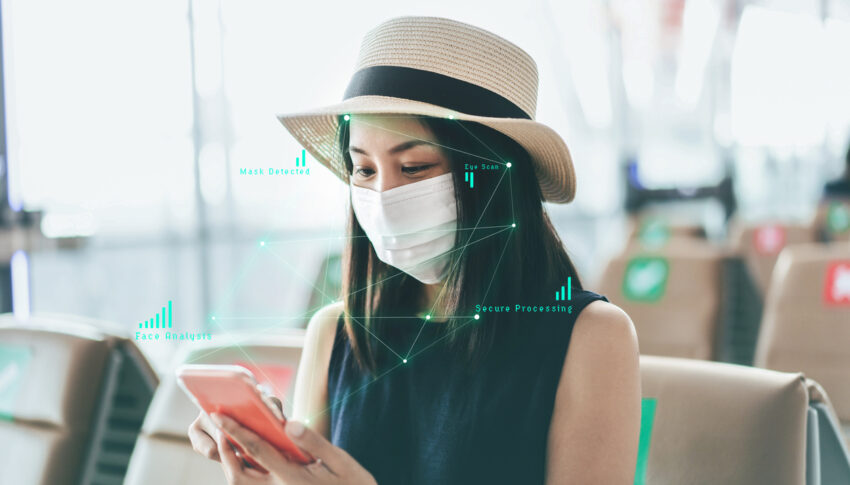The implications for aviation from the COVID-19 pandemic have been unprecedented, and none more so when it comes to document verification. A generation of travel document digitalisation rolled back as public health requirements necessitated manual checks for vaccination and testing certification. As an industry, aviation is working hard to make sure that any future situation in which urgent changes like this are needed will be substantially more smooth, bringing benefits to normal business-as-usual operations as well.
“COVID-19 has undone many of the automation and contactless processes travellers enjoyed pre-pandemic with the requirement for travellers to manage their travel health credentials,” spokesperson Katherine Kaczynska from airline trade grouping IATA, the International Air Transport Association, tells us. IATA is specifically highlighting COVID-19 testing and vaccine certificates, “many of which are paper-based. These document checks are forcing travellers back to manual check-in and border control processes. This is not sustainable.”
Indeed, the staffing crunch as Europe moves into a post-shutdown world has placed additional emphasis on the need to minimise manual processing wherever possible.
“COVID-19 has demonstrated the need to accelerate automated solutions to avoid airport disruptions,” Kaczynska explains. “IATA, working with industry stakeholders, is accelerating work on its One ID initiative to support a successful ramping-up of aviation post-pandemic and provide travelers with the expedited experience they are demanding.”
The One ID model relies on early validation of the passenger’s identity combined with controlled access to data on authorised-to-know and need-to-know basis.
From a passenger journey perspective, this splits out into six stages at which identity is checked against authorisation to pass through each part of the process:
- Ready to fly: replacing legacy check in processes at a specific time and sometimes a specific location prior to flight, this requires an identity check, a destination admissibility check, and storage of the passenger’s information for use during the journey.
- Bag drop: if the passenger is checking bags, this pulls biometric data and prints bag tags — or the 2035 equivalent, whatever that may be — automatically.
- Security screening and restricted area access: this combines identity confirmation with security area authorisation and information about which security protocols are used (additional checks for certain destinations, for example).
- Outbound border: at those countries still requiring it, this is a much lighter, more automated, more pre-checked process where checks will have been performed well in advance of the trip.
- Boarding: this confirms the passenger is authorised to board.
- Inbound border: this is a much lighter, automated and pre-checked process, where background checks have been performed well in advance of the trip.
Inherently, this requires a trusted digitalised identity, beyond the machine readable zones that have been common since the 1980s and the biometric chips in passports that have been rolling out since the 2000s.
“One ID is helping transition industry towards a day when travellers can move from curb to gate using a single biometric travel token such as a face, fingerprint or iris scan and can provide their information direct to governments without the airline as a broker,” IATA’s Kaczynska tells us. “Airlines are strongly behind the initiative. The priority now is ensuring there is regulation in place to support the vision of a paperless travel experience.”
It’s in authorities’ own interest to be involved, Kaczynska implies: “One ID will not only make processes more efficient for passengers, but also allow governments to utilise valuable resources more effectively. One ID will take self-service to the next level for travellers, improve airport efficiency and generate cost-savings for stakeholders, essential as the industry recovers post pandemic.”
IATA is planning One ID for the mid-2030s, to coincide with its NEXTT (New Experience in Travel and Technology) passenger processing future vision. The organisation is currently working at principles stage with other interested parties, not least to avoid prescribing 2020s technology to solve the problems of the 2030s and 2040s.
Author: John Walton
Published: 4th October 2022




